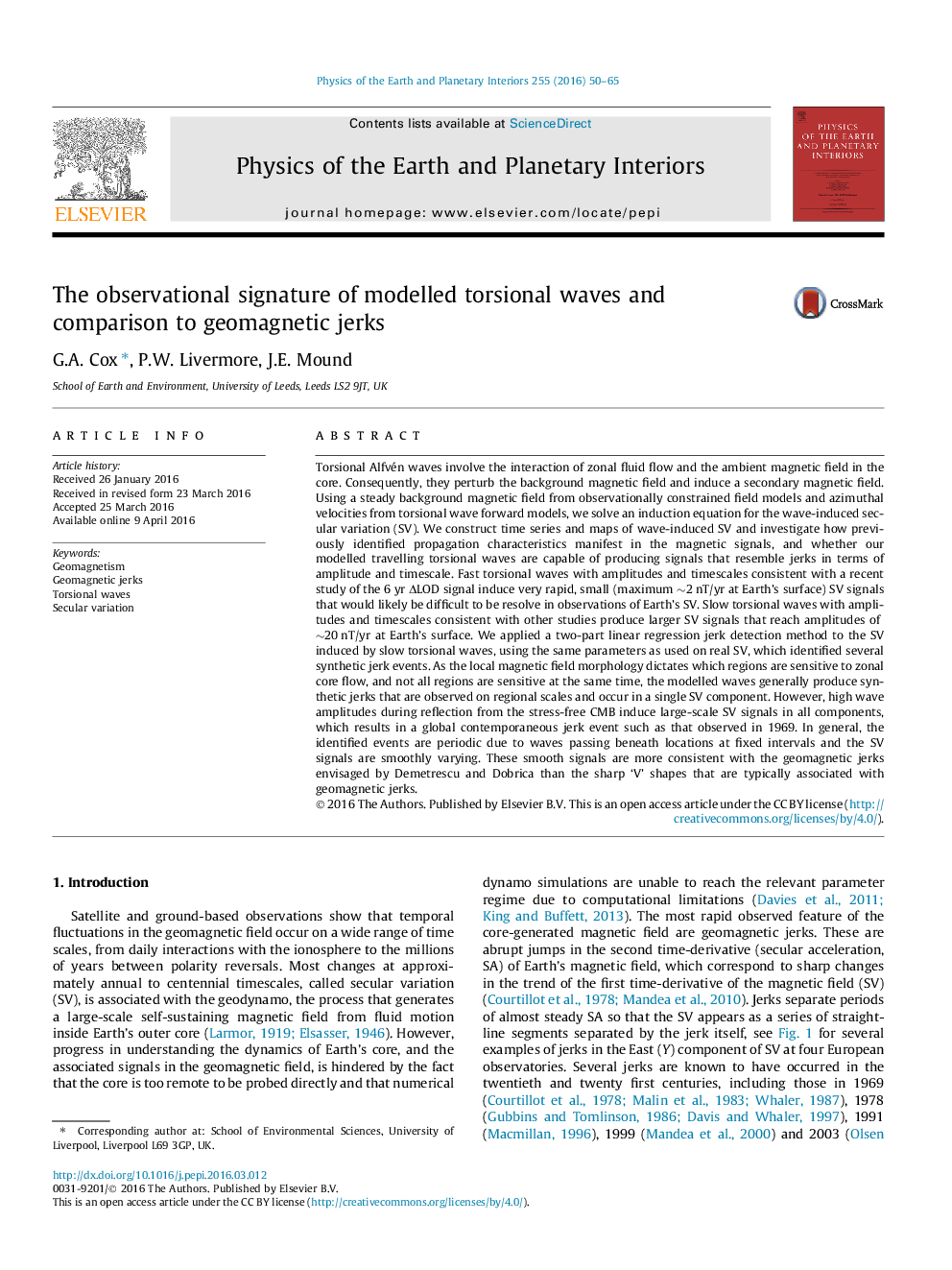| کد مقاله | کد نشریه | سال انتشار | مقاله انگلیسی | نسخه تمام متن |
|---|---|---|---|---|
| 6447453 | 1641486 | 2016 | 16 صفحه PDF | دانلود رایگان |
عنوان انگلیسی مقاله ISI
The observational signature of modelled torsional waves and comparison to geomagnetic jerks
ترجمه فارسی عنوان
امضای مشاهدات امواج پیچشی مدل شده و مقایسه آن با جرثقیل های ژئومغناطیسی
دانلود مقاله + سفارش ترجمه
دانلود مقاله ISI انگلیسی
رایگان برای ایرانیان
کلمات کلیدی
ژئومغناطیس، حرکات ژئومغناطیسی، امواج تورونی، تنوع سکولار،
موضوعات مرتبط
مهندسی و علوم پایه
علوم زمین و سیارات
فیزیک زمین (ژئو فیزیک)
چکیده انگلیسی
Torsional Alfvén waves involve the interaction of zonal fluid flow and the ambient magnetic field in the core. Consequently, they perturb the background magnetic field and induce a secondary magnetic field. Using a steady background magnetic field from observationally constrained field models and azimuthal velocities from torsional wave forward models, we solve an induction equation for the wave-induced secular variation (SV). We construct time series and maps of wave-induced SV and investigate how previously identified propagation characteristics manifest in the magnetic signals, and whether our modelled travelling torsional waves are capable of producing signals that resemble jerks in terms of amplitude and timescale. Fast torsional waves with amplitudes and timescales consistent with a recent study of the 6Â yr ÎLOD signal induce very rapid, small (maximum â¼2Â nT/yr at Earth's surface) SV signals that would likely be difficult to be resolve in observations of Earth's SV. Slow torsional waves with amplitudes and timescales consistent with other studies produce larger SV signals that reach amplitudes of â¼20Â nT/yr at Earth's surface. We applied a two-part linear regression jerk detection method to the SV induced by slow torsional waves, using the same parameters as used on real SV, which identified several synthetic jerk events. As the local magnetic field morphology dictates which regions are sensitive to zonal core flow, and not all regions are sensitive at the same time, the modelled waves generally produce synthetic jerks that are observed on regional scales and occur in a single SV component. However, high wave amplitudes during reflection from the stress-free CMB induce large-scale SV signals in all components, which results in a global contemporaneous jerk event such as that observed in 1969. In general, the identified events are periodic due to waves passing beneath locations at fixed intervals and the SV signals are smoothly varying. These smooth signals are more consistent with the geomagnetic jerks envisaged by Demetrescu and Dobrica than the sharp 'V' shapes that are typically associated with geomagnetic jerks.
ناشر
Database: Elsevier - ScienceDirect (ساینس دایرکت)
Journal: Physics of the Earth and Planetary Interiors - Volume 255, June 2016, Pages 50-65
Journal: Physics of the Earth and Planetary Interiors - Volume 255, June 2016, Pages 50-65
نویسندگان
G.A. Cox, P.W. Livermore, J.E. Mound,
